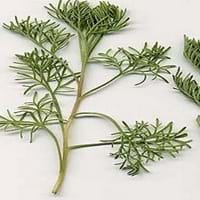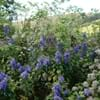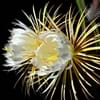Life Span
Perennial
Perennial
Type
Flowering Plants
Shrub
Origin
Not Available
Southern Europe
Types
Aconitum napellus
not available
Number of Varieties
Not Available
Habitat
Damp shady woods, meadows
Temperate Regions
USDA Hardiness Zone
12-15
5-8
Sunset Zone
21, 22, 23, 24
2b, 3a, 3b, 4, 5, 6, 7, 8, 9, 10, 11, 12, 13, 14, 15, 16, 17, 18, 19, 20, 21, 22, 23, 24
Habit
Oval or Rounded
Upright/Erect
Flower Color
Yellow
Yellow, Gray
Flower Color Modifier
Not Available
Not Available
Fruit Color
Green
Non Fruiting Plant
Leaf Color in Spring
Not Available
Gray Green
Leaf Color in Summer
Not Available
Gray Green
Leaf Color in Fall
Not Available
Gray Green
Leaf Color in Winter
Not Available
Not Available
Leaf Shape
Compound
Long hair-like leaves
Plant Season
Not Available
Spring, Summer, Fall
Sunlight
Not Available
Full Sun
Growth Rate
Very Slow
Medium
Type of Soil
Not Available
Loam
The pH of Soil
Not Available
Neutral
Soil Drainage
Not Available
Well drained
Bloom Time
Spring
Late Summer
Repeat Bloomer
Not Available
No
Tolerances
Not Available
Not Available
Where to Plant?
Ground
Ground, Pot
How to Plant?
reseeds
Cuttings, Seedlings
Plant Maintenance
Medium
Medium
Watering Requirements
Do not let dry out between waterings
Average Water Needs, Keep the Soil well drained
In Summer
Lots of watering
Lots of watering
In Spring
Moderate
Moderate
In Winter
Average Water
Average Water
Soil pH
Not Available
Neutral
Soil Type
Not Available
Loam
Soil Drainage Capacity
Not Available
Well drained
Sun Exposure
Not Available
Full Sun
Pruning
Remove damaged leaves, Remove dead branches, Remove dead leaves
Cut back old stems to the ground, Remove damaged leaves, Remove dead branches, Remove dead leaves
Fertilizers
All-Purpose Liquid Fertilizer
All-Purpose Liquid Fertilizer, Complete balanced fertilizer
Pests and Diseases
Red blotch
Free of serious pests and diseases
Plant Tolerance
Drought
Drought
Flowers
Not Available
Insignificant
Flower Petal Number
Single
Not Available
Fragrant Flower
Not Available
No
Fragrant Fruit
Not Available
No
Fragrant Leaf
Not Available
Yes
Fragrant Bark/Stem
Not Available
No
Showy Foliage
Not Available
Yes
Showy Bark
Not Available
No
Foliage Texture
Bold
Medium
Foliage Sheen
Not Available
Matte
Invasive
Not Available
No
Self-Sowing
Not Available
No
Attracts
Hummingbirds
Not Available
Allergy
poisonous if ingested, Toxic
Skin irritation
Aesthetic Uses
Not Used For Aesthetic Purpose
Farmland, small hedge, Wild gardens
Beauty Benefits
Not Available
Not Available
Environmental Uses
Air purification
Air purification
Medicinal Uses
Analgesic, Anodyne, Diaphoretic, Homeopathy, Used as a sedative
Antiseptic, Digestive, Liver problems, Skin Disorders, Tonic
Part of Plant Used
Root
Branch, Fibres, Flower Stalk, Gum, Leaves, Twigs
Other Uses
Not Available
Oil is used in mosquito repellents, Used for fragrance, Used to make hair tonic
Used As Indoor Plant
No
No
Used As Outdoor Plant
Yes
Yes
Garden Design
Not Available
Herb, Vegetable, Mixed Border, Rock Garden, Wall
Botanical Name
Aconitum
ARTEMISIA abrotanum
Common Name
aconite, monkshood, wolf's bane, leopard's bane, mousebane, women's bane, devil's helmet, Queen of all Poisons, blue rocket
lad's love , southern wormwood , old man , boy's love , appleringie , sitherwood
In Hindi
बच्छनाभ
southernwood
In German
Eisenhut
Eberraute
In French
Queen of all Poisons
aurone ou citronnelle
In Spanish
Queen of all Poisons
Artemisia abrotanum
In Greek
Queen of all Poisons
Artemisia abrotanum
In Portuguese
Queen of all Poisons
Abrótano
In Polish
Tojad
Bylica boże drzewko
In Latin
Queen of all Poisons
Southernwood
Phylum
Tracheobionta
Magnoliophyta
Class
Magnoliopsida
Magnoliopsida
Order
Ranunculales
Asterales
Family
Cactaceae
Asteraceae
Clade
Angiosperms, Eudicots
Angiosperms, Asterids, Eudicots
Tribe
Delphinieae
Anthemideae
Subfamily
Not Available
Asteroideae
Number of Species
Not Available
Importance of Queen of all Poisons and Southernwood
Want to have the most appropriate plant for your garden? You might want to know the importance of Queen of all Poisons and Southernwood. Basically, these two plants vary in many aspects. Compare Queen of all Poisons and Southernwood as they differ in many characteristics such as their life, care, benefits, facts, etc. Every gardener must at least have the slightest clue about the plants he wants to plant in his garden. Compare their benefits, which differ in many ways like facts and uses. The medicinal use of Queen of all Poisons is Analgesic, Anodyne, Diaphoretic, Homeopathy and Used as a sedative whereas of Southernwood is Antiseptic, Digestive, Liver problems, Skin Disorders and Tonic. Queen of all Poisons has beauty benefits as follows: Not Available while Southernwood has beauty benefits as follows: Not Available.
Compare Facts of Queen of all Poisons vs Southernwood
How to choose the best garden plant for your garden depending upon its facts? Here garden plant comparison will help you to solve this query. Compare the facts of Queen of all Poisons vs Southernwood and know which one to choose. As garden plants have benefits and other uses, allergy is also a major drawback of plants for some people. Allergic reactions of Queen of all Poisons are poisonous if ingested and Toxic whereas of Southernwood have Skin irritation respectively. Having a fruit bearing plant in your garden can be a plus point of your garden. Queen of all Poisons has no showy fruits and Southernwood has no showy fruits. Also Queen of all Poisons is not flowering and Southernwood is not flowering . You can compare Queen of all Poisons and Southernwood facts and facts of other plants too.





